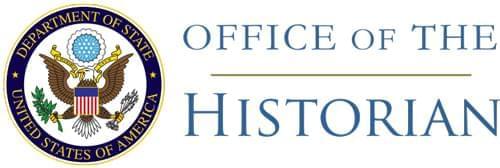CFM Files
United States Delegation Journal
USDel (PC) (Journal) 32
Consideration of Article 2 of the Draft Treaty was postponed to the next meeting and the Commission went on to Article 3. The Chairman said that he had received a letter from the Australian Delegation withdrawing that part of their amendment (CP(Rou/P) Doc. 4) [Page 347] dealing with paragraph 4.20 Mr. Officer (Australia) said that experience over the years since 1919 had shown that alien population groups were a source of unrest; one cause of this condition was that they were the subject of unfair treatment because of their race, religion or language; the Australian amendment was intended to prevent this unrest by having the principles of tolerance written into the law of the land. The Ukrainian Delegate said that the new legal code of Rumania made ample provision for fair treatment of minorities. He quoted at length from the Rumanian code and Constitution (Article 5). The Byelorussian Delegate said that the Australian amendment merely repeated Article 54 of the Treaty of Trianon which had been unsuccessful. He supported the Rumanian statement proposing a redraft of the original draft of Article 3.21 Mr. Marriman said that the U.S. Delegation felt that the Australian amendment was redundant and that Article 3, as agreed to by the Council of Foreign Ministers, made the obligations of Rumania very clear. He hoped his colleagues would allow the amendment to come to a vote quickly so that all of the Delegates could thus express their opinions on the question. The Delegate of the U.S.S.R. also opposed the Australian amendment and cited further Articles (7 and 8) of the Rumanian Constitution to show that adequate safeguards for minorities were already included in Rumanian law. Mr. Officer withdrew the Australian amendment.
The Chairman asked the Delegate of Byelorussia whether he wished to propose a redraft of Article 3 according to the Rumanian memorandum as he had indicated during the course of the debate. He was answered in the affirmative. The Byelorussian proposal (CP Gen Doc. 3, lines 3–6) was rejected by a vote of 10 to 2.
Article 3 was then adopted by a vote of 11 to none, with one abstention.
Before the Commission could take up Article 4, Mr. Jebb (U.K.) introduced as an amendment to Article 3, a proposal aimed at the safeguarding of the position of Jews in Rumania.22 His proposal was based on memoranda presented to his Delegation by various [Page 348] Jewish organizations. The Chairman ruled the UK proposal out of order for the day’s session because Article 3 had already been disposed of and was closed to discussion. Despite the Chairman’s ruling, the Delegate of the U.S.S.R. made a number of remarks in opposition to the U.K. proposal. The Chairman closed the discussion of the U.K. proposal. With respect to Article 4 he said that there were no amendments, or remarks by the Rumanians. No objections were raised and he declared the Article adopted.
Article 5 was adopted without amendment or objection.
The meeting was adjourned at 7:45 p.m.
“Paragraph 4” refers to part of article 13 of the Italian treaty. The Australian letter under reference, dated August 26, 1946, and circulated as Annex 1 to C.P.(Rou/P) Doc. 4, not printed, withdrew an amendment, C.P.(Gen) Doc.1.B.4, concerning human rights previously submitted in connection with article 13 of the Italian treaty. The letter also proposed, an amendment to article 3 of the Rumanian treaty as follows:
“Add following paragraph: ‘(2) Rumania undertakes that in order to fulfil the obligations under paragraph 1 of this article, those obligations shall be recognized as fundamental laws and that no law, regulation or official action shall conflict or interfere with those obligations, nor shall any law, regulation or official action prevail over them.’”
It is this amendment which Officer began to defend.
↩- For the Rumanian observations on the draft peace treaty, C.P.(Gen) Doc. 3, see vol. iv, p. 217.↩
- The British proposal, which was contained in C.P.(Rou/P) Doc. 9, is not printed; for text of C.P.(Rou/P) Doc. 9 Revised, see footnote 71, p. 418.↩
